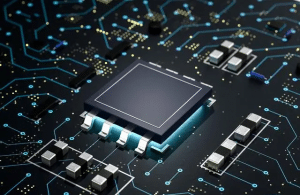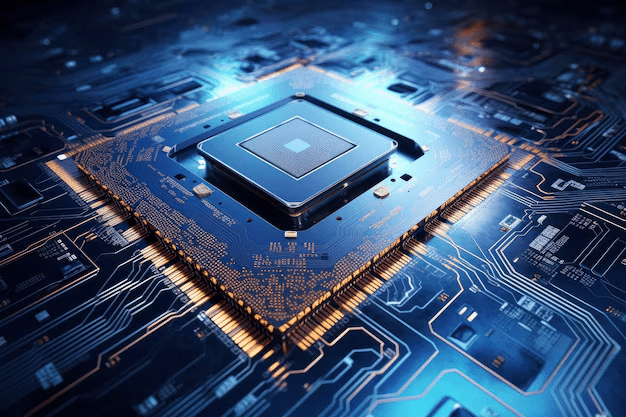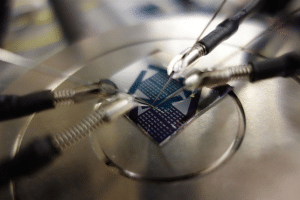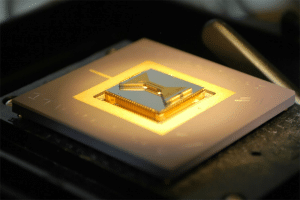
Magnetron sputtering丨influence on the quality of thin films

magnetron sputteringIt has the advantages of high speed, low temperature, low damage, etc. Especially, it is easy to make large area film layer continuously, which is convenient to realize automation and mass production. In recent years magnetron sputtering has been widely used in large-scale integrated circuits, electronic components, magnetic and optical magnetic recording, flat panel displays, as well as optics, energy, machinery and other industrialized fields.
Sources of magnetron sputtering
Plasma sputter deposition is aPhysical vapor deposition technology (PVD), which has been used for decades as a flexible, reliable and effective method of thin film deposition. In the 19th century, Grove observed deposits while using a DC glow discharge to probe the electrochemical polarity of a gas. By the 1930s, sputter deposition of thin films had gained commercial application. Early sputter deposition was based on cathodic sputtering or DC diode sputtering. However, with improvements in vacuum technology in the late 1950s and early 1960s, it was recognized that a wide range of conductive materials could be deposited using DC sputtering. At the same time, in the early 1960s Bell Laboratories and Western Electric utilized sputtering to produce tantalum (Ta) films for integrated circuits, thus beginning its industrial application. After a controversial start, magnetron sputter deposition developed rapidly in the late 1970s and early 1980s because of the high deposition rates of the covered metal films, and has been the mainstay of plasma sputter deposition ever since. Magnetron sputter deposition is also the most widely used process for thin film deposition and surface engineering treatments.
Principle of magnetron sputtering
Sputter coating is a method of forming a plasma on the surface of a target material and bombarding the surface of the target with energy-charged particles in the plasma, so that the sputtered particles form a coating on the surface of the substrate, i.e., a film is formed by the sputtering phenomenon. According to the structure and relative position of the electrodes and the process of sputtering, sputtering can be divided into DC secondary sputtering, tertiary (including quadrupole) sputtering, magnetron sputtering, opposite-target sputtering, and ECR sputtering.
Physical deposition methods typically have few limitations on the material to be deposited on the substrate and can deposit virtually any material. The basic physical process of plasma sputtering is the exchange of momentum between energetic matter and atoms within the cathode target. Energetic materials are usually ions of inert noble gases because they accelerate through the cathode sheath to the cathode target more readily than neutral atoms. Sputtering coatings offer many advantages over conventional vacuum coatings. For example, the film layer and the substrate adhesion; can be convenient to produce high melting point film; in a large area continuous substrate can be produced uniform film layer; easy to control the film composition, can produce a variety of different composition and ratio of the alloy film; can be carried out to reactive sputtering, produce a variety of compounds film, can be conveniently plated with a multilayer film; easy to industrialize the production of easy to realize the continuity of the automation of such operations. In recent years, magnetron sputtering technology in the increase of metal ionization, improve target utilization, improve the deposition rate and avoid the target poisoning in the reaction sputtering and other aspects of continuous development. The magnetron target surface is sputtered unevenly. Along the runway where the electrons move as spinning wheel lines, part of the target surface is sputtered preferentially by ions, forming sputtering grooves. It has been shown that the grain size of the target, the surface micro morphology, etc. play an important role in the fabrication of thin films.
Reasons affecting the quality of magnetron sputtered films
sputtering pressure
The main effect of sputtering air pressure is the energy of the sputtered ions, and the ion energy level affects the ability of the ions to migrate and diffuse when they reach the substrate, which will have an effect on the resistivity, surface smoothness, etc. In addition, the effect of the working air pressure on the sputtering yield is two-fold. On the one hand, it increases the probability of collision of electrons with Ar gas atoms, which increases the probability of collision of ionized Ar gas atoms, which increases the amount of ionized Ar gas, thus sputtering out more target atoms. On the other hand, it makes the bombarding gas molecules collide with the target atoms frequently, thus reducing the rate of deposited atoms on the substrate.
sputtering power
An increase in sputtering power can increase the sputtering rate, increase film densification, and improve the quality of the film layer. However, too much sputtering power can lead to an increase in the chance of atomic collisions, which can also reduce the deposition efficiency.
bias voltage
During the sputter coating process, the bombardment of the substrate by ions can seriously affect the structure and morphology of the deposited film. Applying a corresponding negative voltage to the substrate can both enhance the bombardment effect, resulting in a relatively smooth film surface, and reduce the proportion and volume of holes. These properties are the result of ion bombardment-induced migration of deposited atoms on the substrate surface.
temp
The surface morphology of sputter-deposited films is primarily affected by the substrate temperature and, to a lesser extent, by the bonding between the coating and the substrate.
We offer Magnetron sputtering foundry customization services, Feel free to leave a message to inquire.
Influence of the annealing process on the platinum resistance
Influence of the annealing process on platinum resistors In the field of high-precision temperature measurement, thin-film
Difference between ICPCVD and PECVD preparation of silicon nitride films
Difference between ICPCVD and PECVD preparation of silicon nitride films IC
Why choose electron beam for vacuum evaporation (EB-PVD)
Why Choose Electron Beam for Vacuum Evaporation (EB-PVD) What's Real



.jpg)